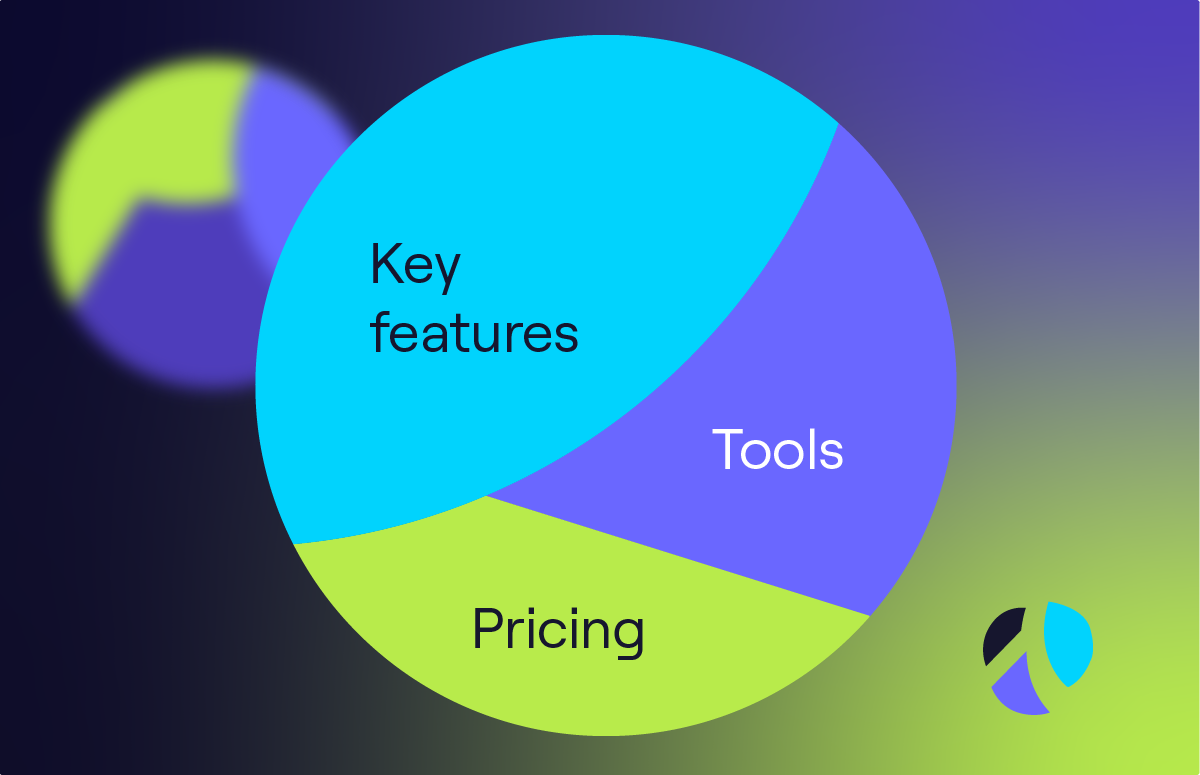Multithreading Sales: Guide to Closing Big Deals Fast
Are you eager to bring in more enterprise deals fast?
Then, multithreading sales might be the answer.
Think of it like designing a bespoke suit. It’s all about precision, attention to detail, and using multiple threads to create the perfect deal.
You often can’t rely on a single contact to close big deals with larger organisations and enterprise clients.
With the multiple threads approach, you engage not just with one decision-maker but a whole team of influencers and departments within an organisation to ensure you meet everyone’s needs.
In this article, we’re picking apart how to multithread a deal for better conversions.
Let’s go 👇
What does multithreading mean in sales?
Sales multithreading means building connections with several decision-makers in a purchase. It involves more than one person in a sales deal, unlike single-threaded sales, which only engage one stakeholder.
Much like tailoring a quality suit involves various components, each decision-maker is like a different part of the suit: procurement might be the fabric, finance could be the buttons, IT is the lining, and the CEO is the final fit. Each one plays a vital role in shaping the outcome of the deal.
A single-thread approach works fine for smaller-scale deals because the stakes aren’t that high.
However, for big, complex, enterprise-level deals, you need more than one thread to hold everything together.
By scaling your sales efforts through multiple contacts across departments, you can help to ensure that any single stakeholder’s concern doesn’t derail the deal.
The more decision-makers and influencers that recognise the value in your offering, the more likely you’ll close your deal - and faster, too.
Multithreading sales vs single threading sales
When evaluating multithreading versus single threading, it’s essential to recognise how each impacts your overall sales process.
Jói Sigurdsson, Founder and CEO of CrankWheel, said:
“Generally speaking, in a small business or startup, you might only deal with a manager and founder/owner. Smaller ticket sales involve less complicated sign-off.”
“Whereas larger ticket sales are more complicated. In mid-market and enterprise companies, you could be aiming to secure the go-ahead from numerous managers, decision-makers and at least one budget-holder.”
The key difference lies in the breadth of relationships within the target organisation. Here’s a breakdown:
Single-threaded sales
A single-threaded approach typically focuses on building a connection with one individual, typically the primary decision-maker, and directing all efforts through that single point of contact.
While this approach may work in smaller deals or simpler sales processes, it creates a significant vulnerability. If the contact leaves, gets cold feet or lacks sufficient influence within the company, the entire deal can stall or fall apart.
B2B sales reps are limited in their ability to overcome internal objections or roadblocks because they rely on one person to advocate for their solution.
Multithreaded sales
Multithreading sales involves building relationships with multiple stakeholders across various departments.
This approach broadens your influence, allowing you to address different decision-makers’ unique needs and concerns—whether finance is examining ROI, IT is scrutinising technical requirements, or operations are focusing on usability.
Multithreading reduces the risk of the deal being derailed by any one person and enables faster decision-making since multiple stakeholders are already engaged in the process.
Ultimately, multithreaded sales offer greater security, flexibility, and potential for larger, more complex deals to close more quickly.
Want to reach out to more enterprise decision-makers? You’ll want a quality B2B database. Consider Cognism:

“If you are looking for a B2B provider to power the UK, Europe and North America, Cognism's got you covered”
Why do sales teams need to multithread?
Now that we’ve got the basics down let’s look at some of the advantages of multithreading in sales:
1. Reduced risk of a deal falling apart
With multiple contacts at different levels in the company, your deal doesn’t hinge on just one person’s involvement.
If your primary contact leaves the company, is no longer involved in the decision-making process, or gets cold feet, other stakeholders can keep the deal moving forward.
2. Faster decision-making and shorter sales cycles
Instead of relying on one person to act as a go-between for multiple departments, you’ve already established relationships with key players.
This reduces delays, as everyone involved in the decision has direct access to you and the information they need.
3. Deeper understanding of a prospect’s needs
Multithreading outreach allows sales teams to understand an account’s broader needs, challenges, and internal dynamics. This helps to position your product more effectively and solve different problems within the organisation.
For instance, each department in a company may have a different set of priorities. By engaging multiple stakeholders, you get a clearer picture of the full scope of the company’s requirements.
IT might be focused on technical features, while finance is looking at ROI, and operations are concerned with ease of implementation.
The more in-depth your understanding, the more you can customise your proposal.
💡Need IT decision maker’s emails? We’ve got you.
4. Increased deal size and higher close rates
When you interact with multiple departments, you can often uncover opportunities to expand the scope of your solution.
For instance, you might start by selling a product to IT, but discover that the B2B marketing team could also benefit from your service, leading to a more significant deal overall.
Moreover, by engaging multiple stakeholders, sales teams increase their chances of aligning with key decision-makers and influencers, improving the likelihood of winning the deal.
5. Improved trust and credibility
Building relationships with multiple contacts increases trust and credibility, as the company sees you as a partner committed to solving various team challenges, not just pitching to one person.
This lays the foundation for future deals and long-term relationships that go beyond just one department or project.
How to do multithreading sales effectively?
1. Qualify early
As Jói said:
“Before you put the big deal into the CRM and tell your boss, you must properly qualify the opportunity.”
This isn’t about getting a “yes” or “no” answer—it’s about ensuring this is the right opportunity for both parties.
So, how do you know if this is the right opportunity?
Ask yourself these questions:
- Does the prospect genuinely need your product/service?
- What problems will it solve for them?
- Is there a budget or a possibility of securing one?
- Do they have a realistic timescale for when they would want it implemented?
- Who’s going to be involved in the buying process?
These prompts will help you identify the viable leads on the first call, avoiding wasted time.
Jói added:
“In other words, make sure it’s a genuine, viable lead, and they’re ready to progress to the next stages.”
2. Cultivate an internal champion
In any B2B deal, an internal champion is your best ally.
Jói explains:
“It’s someone who will sell this deal to other internal stakeholders and will talk about your offer positively when you can’t always speak to the relevant people.”
“This could be the person you speak to on your first cold call or sales demo, so do everything you can to gain their trust and make them a fan of your product/service.”
For example, if your IT department contact is particularly enthusiastic about your product, encourage them to speak to other decision-makers on your behalf.
Positioning them as your advocate increases your chances of keeping the deal alive even when you’re not directly involved in every meeting.
And remember, establishing a solid relationship early on is vital to gaining their support and positive influence.
3. Identify key stakeholders
After qualifying the lead, map out who else in the company needs to be involved in the decision.
- Who holds the budget?
- Who will be using the product?
- Who could block the deal?
The goal is to engage with each individual early in the process.
For example, let’s say you’re selling HR software. Your main point of contact might be the head of HR, but you’ll also need to speak with:
- The CFO to ensure budget approval.
- The IT department to confirm the software integrates with their systems.
- A legal representative to review contract terms.
By identifying these stakeholders upfront, you can avoid last-minute surprises that could derail the deal.
Jói added:
“This is where an internal champion can play such an important role. If you’re unsure of the company hierarchy - ask them! They might have just the intel you need.”
4. Create a mutual success plan
This lays out the key milestones and expectations for both parties during the sales process.
This isn’t just about what you’ll deliver—it’s also about understanding the prospect’s timeline and internal decision-making process. Getting both sides aligned early minimises miscommunication and sets clear expectations.
Jói provided an example:
“If you expect the deal to take three months, you’ll already know in advance and won’t be disappointed or frustrated with the slow progress.”
So, if your prospect’s buying process typically takes three months, create a timeline that includes crucial steps like budget approval, security review, and final decision-making.
Sharing this plan ensures everyone knows what’s happening and when to expect updates.
Drafting a mutual success plan will help focus minds and reach an agreement on timelines. This way, everyone is on the same page!
5. Align multiple viewpoints
With multiple decision-makers, internal advocates, stakeholders, and budget holders involved, you must win over numerous viewpoints.
Jói advised:
“At all stages of the process, ask questions and gather as much information as possible. Then, you can proactively put forward solutions that will benefit everyone.”
“In your proposal, answer every sales objection and lay out positive reasons why every decision-maker would benefit from your product/service. Use real-world examples from your customer case studies or testimonials, if possible.”
Your sales pitch should be tailored to each individual.
While the finance team cares about cost savings, the IT department is more interested in integration and security, and the end users want an easy-to-adopt solution.
Tailoring your pitch shows that you understand their unique priorities.
For example, when pitching to finance, highlight how your product will reduce operational costs or increase revenue. For IT, focus on the technical specifications and how they fit into their existing infrastructure. When speaking to end users, emphasise user-friendly features and ease of training.
Understanding each decision-maker’s perspective and creating personalised proposals can increase the odds of buy-in through multithreading in sales.
6. Keep everyone in the loop
Multithreading sales means more people are involved, so it’s crucial that everyone is on the same page.
Jói highlighted some best practices:
“Create and send a proposal. If multiple documents are involved, give everyone access to the same shared folder. Keep everyone in the loop. Include anyone else involved on your side, too.”
Consistent messaging and open lines of communication are the critical pieces here.
What do they lead to?
More efficient decision-making!
Moreover, by sharing updates regularly and ensuring everyone knows what’s happening at every stage of the sales process, you’ll build transparency and trust that keeps the deal moving forward.
For example, use shared folders or tools like Google Drive to provide access to proposals and product demos. You’ll also want to send regular email updates summarising progress, next steps, and answers to any questions, which are essential to maintaining momentum.
7. Track email and proposal data
Getting as much data as possible when prospecting to multiple decision-makers is helpful.
What kind of data are we talking about here?
Email and proposal tracking data, such as:
- Who’s opened and forwarded emails.
- Who’s looking at the proposal.
- How much time they spend viewing it.
Sales tools like Cognism, Kaspr, Saleloft, Hotjar or Proposify can provide valuable insights for multithreading in sales. Email tracking tools like Zoho and Klaviyo can show who’s opened your messages, how long they’ve viewed your proposal, and whether they’ve forwarded it internally.
And how exactly does this B2B data help you?
It helps to get the deal over the line!
With the help of this data, you can make informed email and proposal tweaks - hedging the chances of success.
For example, If you notice that the CFO hasn’t opened your email while the head of HR has forwarded it to multiple colleagues, follow up directly with the CFO to address any concerns they might have. This insight lets you proactively tackle roadblocks before they become deal-breakers.
💡Not sure how to get a CFOs email? This list will help.
Multithreading sales: key takeaways
Mastering multithreading in sales is like crafting the perfect custom suit. It’s about understanding the fit and style of each individual involved and then tailoring your approach to be specific for them.
With multithreading, you’re not stuck depending on one point of contact, hoping they’ll be your champion.
Instead, you’re reaching out to each department and decision-maker with a seamless plan that makes your product the obvious choice.
As you tackle your next big deal, think of yourself as the master tailor, patiently weaving every conversation and relationship into place.
When you’re done, you won’t just be closing a sale; you’ll have crafted a sales pitch that practically sells itself.
But to help you start threading and reap the rewards of what you sew, you’ll need 👇
Multithread enterprise deals with Cognism
If you want to reach the right people at the right companies, you need a quality data provider.
Take your enterprise selling strategy to the next level with quality-compliant data powered by AI.
With Cognism's Sales Companion, you can:
- Strengthen your multi-threading strategy by surfacing key personas and recommended contacts to engage with next.
- Plan territories with a global database of verified B2B emails and validated mobiles.
- Enrich your data for accurate segmentation, scoring, and routing.
- Have more conversations with high-value accounts.
Learn more over a demo👇



